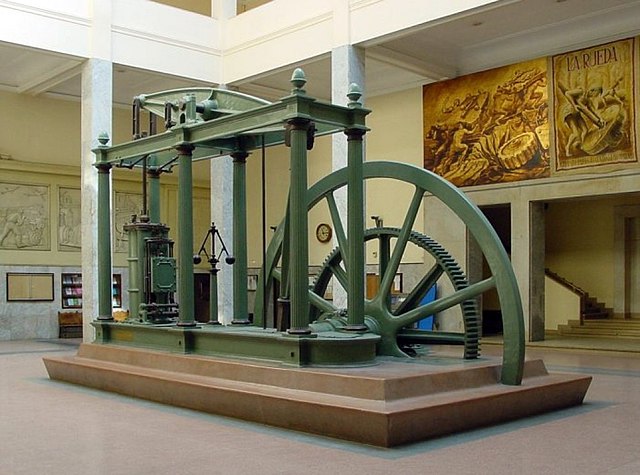The Great Divergence or European miracle is the socioeconomic shift in which the Western world overcame pre-modern growth constraints and emerged during the 19th century as the most powerful and wealthy world civilizations, eclipsing previously dominant or comparable civilizations from the Middle East and Asia such as Qing China, Mughal India, the Ottoman Empire, Safavid Iran, and Tokugawa Japan, among others.
The distribution of coal deposits shaped industrial development in Britain.
Gandhi promoted spinning Indian cotton cloth by hand on the spinning wheel as a self-sufficient alternative to British machine-woven imports.
A Watt steam engine, the steam engine fuelled primarily by coal that propelled the Industrial Revolution in Great Britain and the world
The Industrial Revolution, sometimes divided into the First Industrial Revolution and Second Industrial Revolution, was a period of global transition of the human economy towards more widespread, efficient and stable manufacturing processes that succeeded the Agricultural Revolution. Beginning in Great Britain, the Industrial Revolution spread to continental Europe and the United States, during the period from around 1760 to about 1820–1840. This transition included going from hand production methods to machines; new chemical manufacturing and iron production processes; the increasing use of water power and steam power; the development of machine tools; and the rise of the mechanized factory system. Output greatly increased, and the result was an unprecedented rise in population and the rate of population growth. The textile industry was the first to use modern production methods, and textiles became the dominant industry in terms of employment, value of output, and capital invested.

A Roberts loom in a weaving shed in the United Kingdom in 1835
A handloome weaving from William Hogarth's Industry and Idleness in 1747
John Lombe's silk mill site today in Derby, rebuilt as Derby Silk Mill
A weaver in Nürnberg, c. 1524







